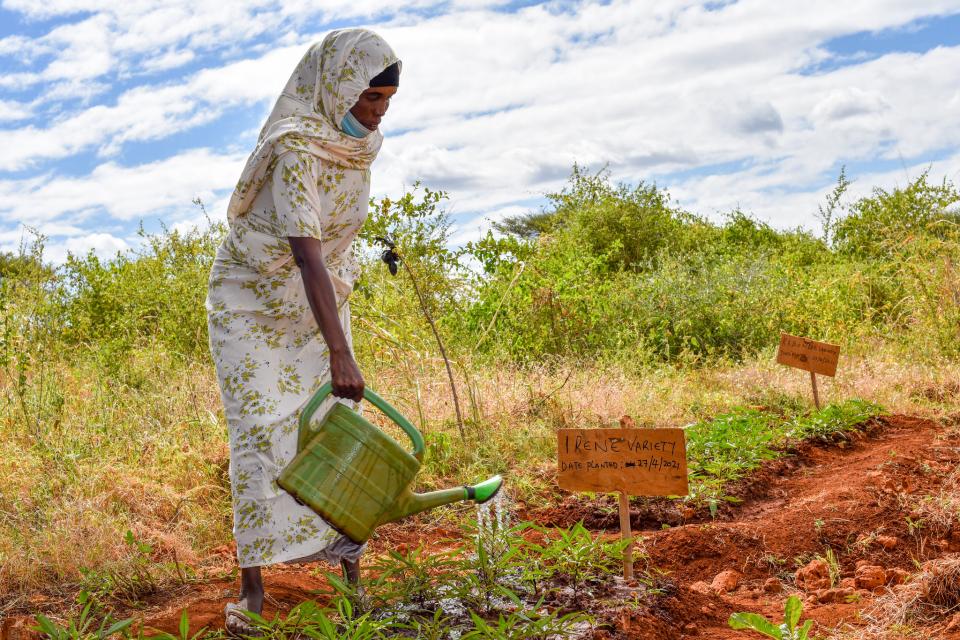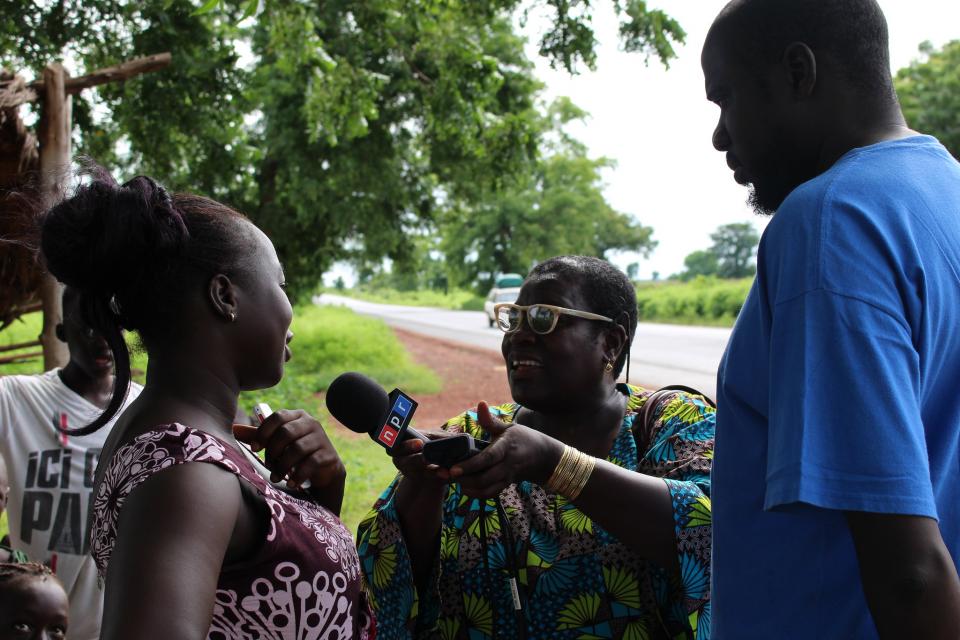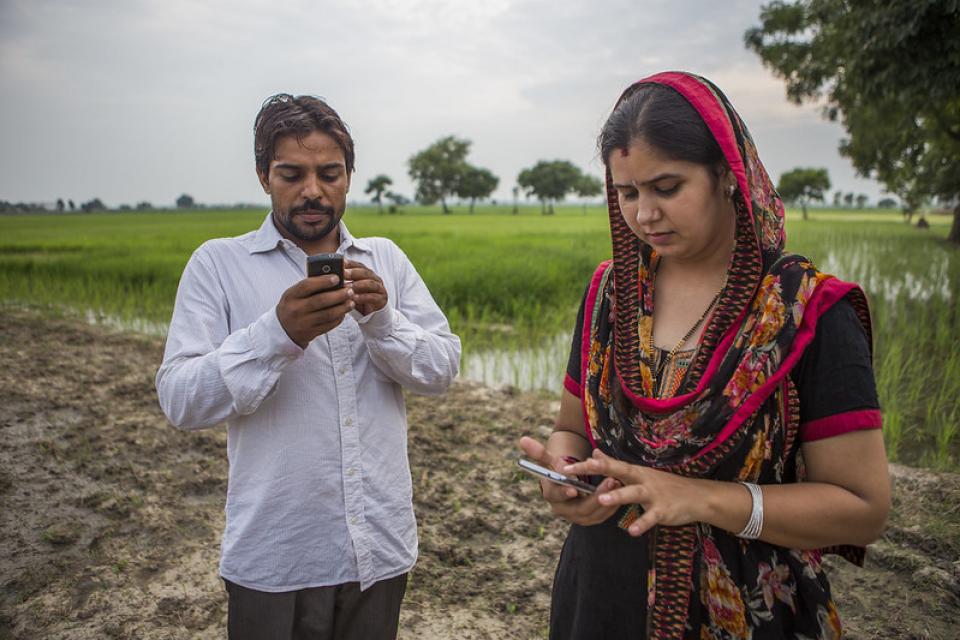New hotspot mapping reveals where climate change hits women the hardest
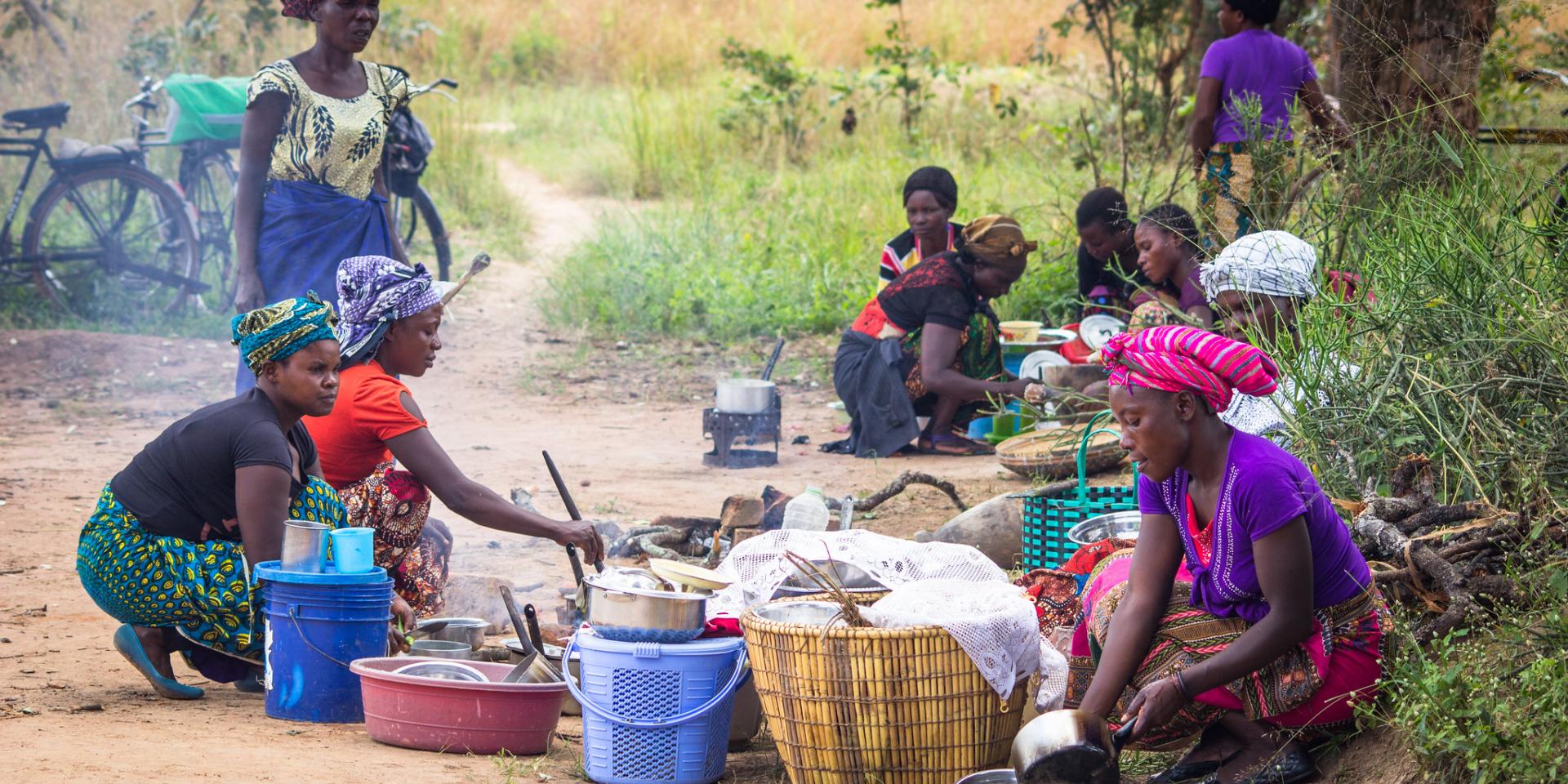 Photo: Joe Nkadaani/CIFOR.
Photo: Joe Nkadaani/CIFOR.
Women are more at risk of experiencing adverse climate change effects in some areas than in others. A new hotspot mapping reveals where.
A smallholder woman growing rice and vegetables in the southwest of Bangladesh is likely facing coastal flooding, rising sea levels, increasing salinity and other climate-related stresses.
Her rice production is being particularly hard hit as the water and soil becomes salty with rising seas. She is more likely to be affected by these changes than the men in her community due to restrictive social norms as well as her limited access to new technologies and inputs.

A woman is husking rice in Bangladesh. Photo: Mike Lusmore/Duckrabbit.
In a recent analysis, we identified hotspot countries among 87 low- to middle-income countries in Latin America, Asia and Africa where women involved in agriculture are most at risk to adverse effects of climate change. Zambia, Mali, Bangladesh and Pakistan are among the countries ranked high on the list.
These climate-agriculture-gender inequity hotspots are areas where large numbers of women are participating in agriculture and food production and where extreme climate hazards trigger crop failure, pest and disease outbreaks, and degradation of land and water resources. They are also areas where formal and informal institutions, including cultural and social norms, create inequalities that exacerbate women’s vulnerabilities to climate change.
In low-income countries, women are important smallholder farmers and often the primary users and managers of natural resources. Many households in poorer countries rely on women producing crops for their food security. In parts of South Asia and Africa, women constitute more than 55 percent of the agricultural workforce.
By identifying areas where women are the most at risk to climate change impacts, we can now look at where to invest in actions to address such inequalities.
Women in low-income countries more vulnerable to climate hazards
Climate change is projected to have substantial and widespread impacts on food production, food security and the livelihoods of many, especially those in lower-income countries. Local impacts of climate change—such as droughts and floods—affect women and men’s ability to cope, produce adequate food and earn a living differently.
Women tend to be more vulnerable to shocks, including impacts of climate-related weather anomalies, such as droughts and floods. They are also more likely to shoulder the burden of increased labor following shocks and climate-related changes in cropping patterns and livestock production. This burden of responsibility is made heavier in case men move away from the family farm to gain income elsewhere.
The situation for women is made more difficult because they tend to own fewer and lower-value assets than men, have less access to capital, labor and agricultural inputs, and hold limited ownership of land.
Women in low-income countries also have less access to information, which in turn means lower awareness and knowledge of climate risks and how to manage them.
Social norms and gender roles in many countries limit women’s participation in strategic decision-making in their households and communities, making them less able to participate in group activities, access extension services or adopt new practices and technologies. Overall, their capacity to respond to climate stress is reduced.
How we identified climate-agriculture-gender inequity hotspots
We built on previous research to develop a methodology for identifying climate-agriculture-gender inequity hotspots in low- to middle-income countries. We have detailed this methodology in a forthcoming paper and provide a broad summary of it in this post.
We started by using the Intergovernmental Panel on Climate Change's 2020 risk framework where risks “arise from potential impacts of climate change as well as human responses to climate change.”
As the diagram below shows, we established that inequity hotspots exist at the intersection between climate hazard, vulnerability resulting from entrenched inequities and the exposure of those involved in agriculture to risk.
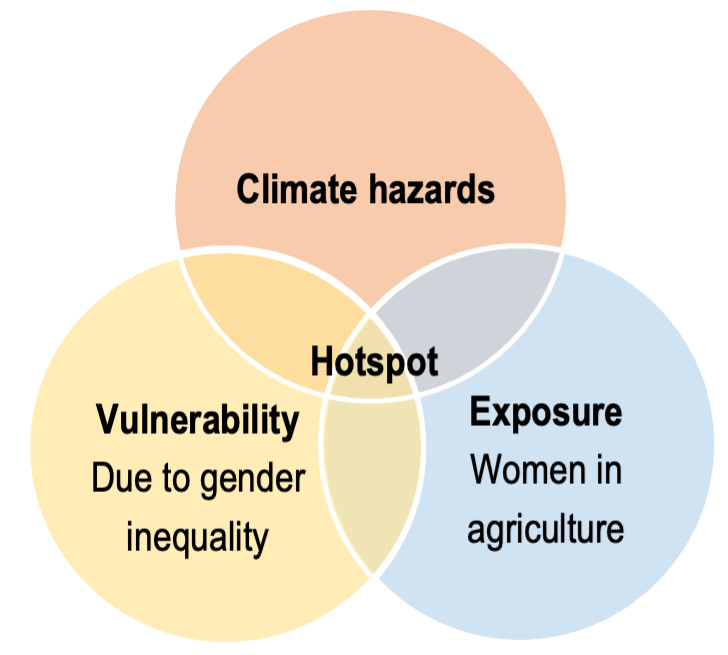
Climate hazards are based on problems such as drought, floods and climate variability as well as changes to crop suitability, such as a shorter growing season with higher temperatures. We used geospatial data related to climate hazards along with a population headcount to estimate the share of rural populations likely to be facing climate hazards within low- to middle-income countries.
Exposure is the extent to which women farmers, as compared to men farmers, are exposed to such hazards given their level of involvement in agriculture. We identified women’s exposure to climate hazards at the country level by looking at the share of women employed in agriculture in low- to middle-income countries. For identifying hotspots at the subnational level, we looked at women’s share in labor participation and hours worked in specific agricultural activities (such as growing cereal crops or producing livestock or mixed farming), taking their relative importance into account.
Vulnerability reflects the constraints to women’s capabilities to mitigate and adapt to climate change effects due to prevailing gender inequality in different domains. We used the Organisation for Economic Co-operation and Development’s 2014 Social Institutions and Gender Index, which captures a range of gender inequality component and related indicators for identifying hotspots at the subnational level.
We used the metrics we developed on climate hazards, exposure and vulnerability to calculate a climate-agriculture-gender inequity hotspot index by country. This index was standardized, allowing countries to be compared and ranked by the index score as well as visualized on a map.
We also looked at specific hotspot areas within a few select countries that all ranked high and for which sufficient data at a subnational level made further analysis possible, namely Zambia, Mali, Bangladesh and Pakistan.
Global inequity hotspots mapped with African countries most at risk
We ranked 87 low- to middle-income countries in Latin America, Asia and Africa by their overall score on our climate-agriculture-gender inequity hotspot index. The ‘hottest’ countries (global rank 1 to 15) are all situated in Africa.
We produced a climate-agriculture-gender inequity hotspot map (see below), which clearly shows that women are most at risk because of their exposure, vulnerability and prevailing climate hazards in West, Central and East Africa; in Western and South Asia; and in a few countries in Southeast Asia.
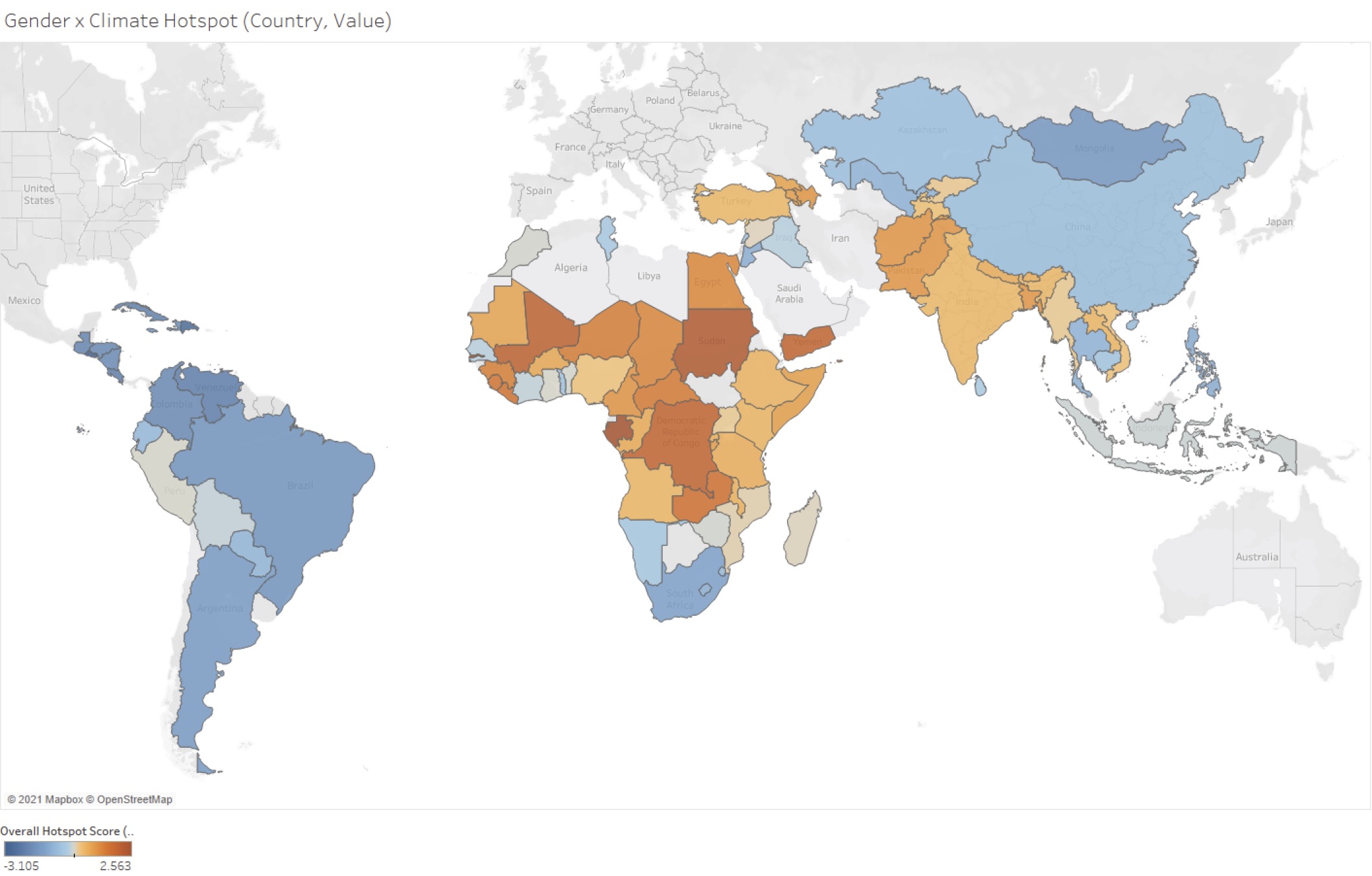
Climate-agriculture-gender inequity hotspots among low- to middle-income countries. Darker, orange-colored countries are ‘hotter’ as they have a relatively high climate-agriculture-gender inequity hotspot index score. Darker, blue-colored countries have relatively low climate-agriculture-gender inequity hotspot index scores are therefore ‘cooler’.
We found, for example, that, relative to other provinces in Zambia, Luapula is a climate-agriculture-gender inequity hotspot province for perennial crops. Studies confirm that Luapula witnesses heavy annual rainfalls, which makes the area prone to seasonal flooding. Livelihoods are centered around the perennial crop cassava, commonly labelled as a women’s crop, in addition to groundnuts and millet. As in other areas in Zambia, women here have less access to land, capital, technology and information than men, little decision-making power and suffer under restrictive gender norms.
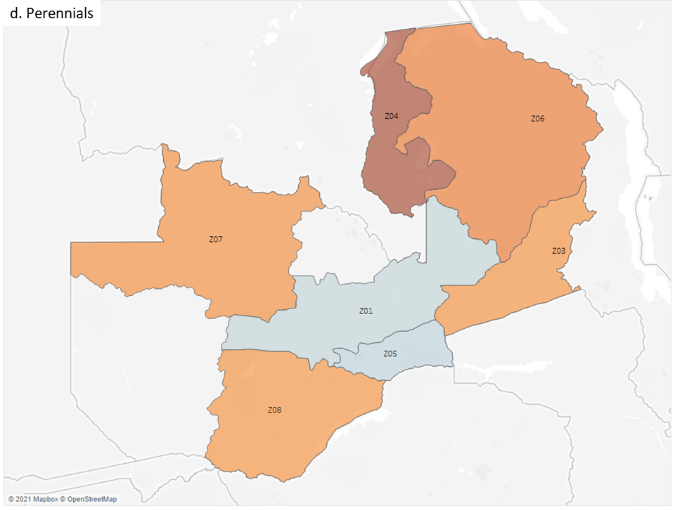
Names of the Zambian provinces are Z01: Central; Z02: Copperbelt; Z03: Eastern; Z04: Luapula; Z05: Lusaka; Z06: Northern; Z07: North-Western; Z08: Southern; Z09: Western. Dark blue provinces received a relatively low hotspot score, while dark orange provinces received a high hotspot score.
Hotspot mapping contributes to risk management, helps decision-making and guides investment
Our research shows that women are more at risk of experiencing adverse climate change effects in some areas than in others. The high risk follows from converging climate hazards, women’s exposure to such hazards because of their involvement in agriculture and women’s vulnerability due to gender inequalities.
Our hotspot mapping helps to identify hotspot countries, and hotspot areas within those countries, where women are not only being hit hard by some of the most extreme climate change effects, but are also the most disadvantaged when it comes to mitigating and adapting to climate change. Identifying such high-risk countries and areas can help decision-makers develop context-specific policies for addressing gender inequalities. It can also guide and prioritize their investments in actions designed to support the women most at risk.
##
